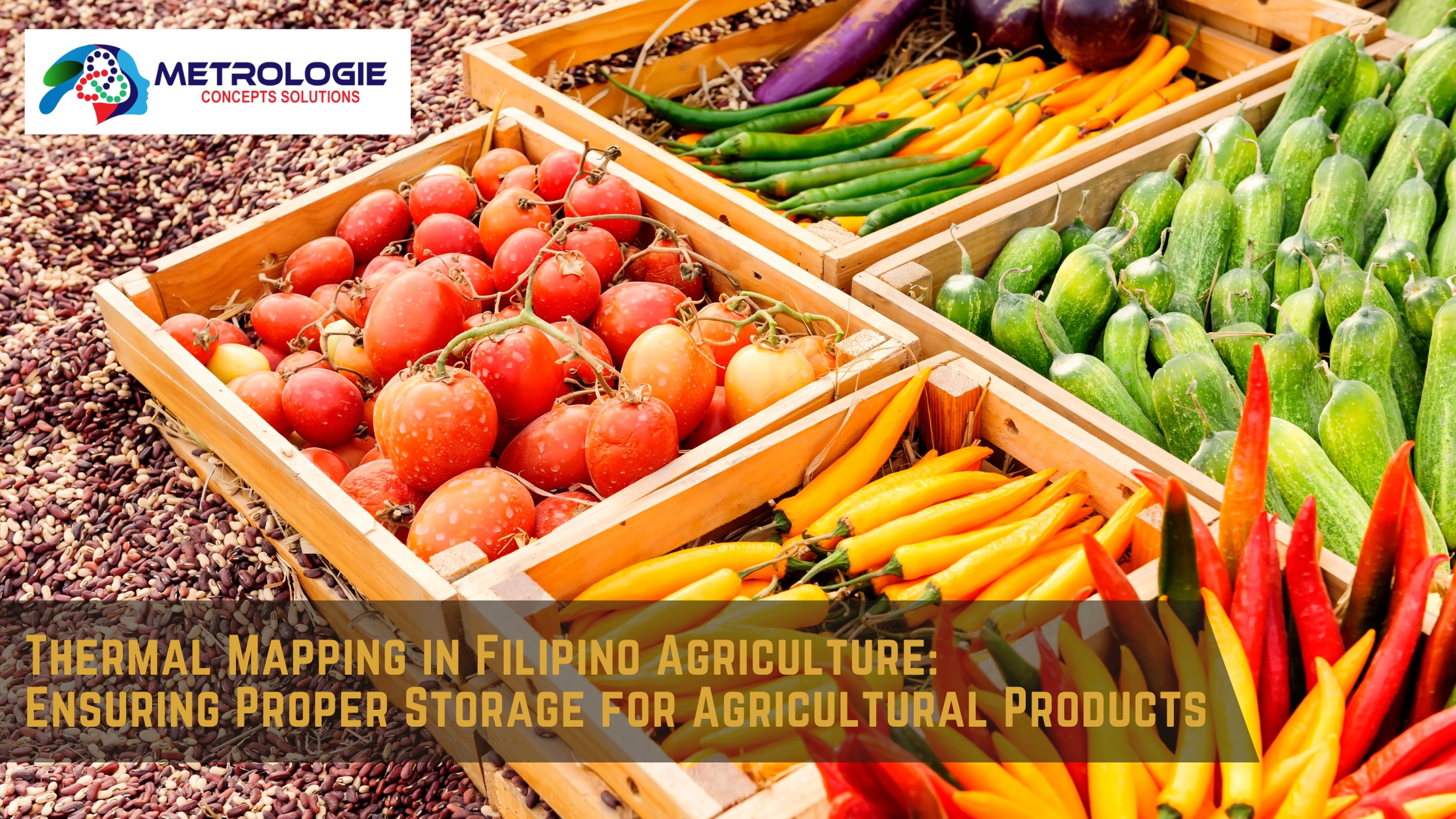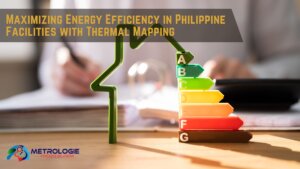Introduction
In a country like the Philippines, where agriculture plays a vital role in the economy, ensuring the proper storage of agricultural products is essential. High temperatures, humidity, and inconsistent storage conditions can lead to significant losses, directly impacting farmers, distributors, and consumers.
Thermal mapping has emerged as a critical tool for addressing these challenges. By analyzing and optimizing storage environments, this technology helps maintain the quality of agricultural products, ensuring they remain fresh and safe from farm to market.
In this article, we’ll explore the role of thermal mapping in Filipino agriculture, its applications, and how it contributes to sustainable practices and economic growth.
Understanding Thermal Mapping
What is Thermal Mapping?
Thermal mapping is a process that involves monitoring and recording temperature and humidity levels in a given space over time. By identifying temperature fluctuations and hotspots, businesses can make informed decisions to optimize storage conditions.
Key Elements of Thermal Mapping:
- Sensors and Data Loggers: Devices used to collect accurate temperature and humidity data.
- Mapping Reports: Comprehensive analyses that highlight problem areas and provide solutions.
- Regular Monitoring: Continuous or periodic checks to ensure conditions remain optimal.
Challenges in Agricultural Storage in the Philippines
1. High Temperatures and Humidity
- The tropical climate of the Philippines creates ideal conditions for spoilage.
- Crops like rice, corn, and fruits are particularly vulnerable.
2. Inadequate Infrastructure
- Many storage facilities lack modern cooling and insulation systems.
3. Transportation Issues
- Long travel times and improper storage during transport exacerbate quality loss.
4. Pest Infestations
- Warm and humid conditions encourage the growth of molds, fungi, and pests.
5. Power Outages
- Frequent brownouts disrupt cold storage operations, putting stored products at risk.
Importance of Thermal Mapping in Agriculture
1. Reducing Post-Harvest Losses
- Nearly 20% of harvested crops in the Philippines are lost due to poor storage.
- Thermal mapping identifies areas of concern, allowing for preventive measures.
2. Enhancing Food Safety
- Proper temperature control minimizes the growth of harmful bacteria and fungi.
3. Prolonging Shelf Life
- Crops stored under optimal conditions last longer, increasing marketability.
4. Ensuring Export Quality
- Compliance with international standards is essential for exporting agricultural products.
5. Cost Savings
- Reducing spoilage and inefficiencies lowers operational costs for farmers and distributors.
Applications of Thermal Mapping in Filipino Agriculture
1. Cold Storage for Fruits and Vegetables
- Tropical fruits like mangoes and bananas require precise temperature control to prevent ripening and decay.
2. Grain Silos
- Grains like rice and corn are susceptible to mold growth in humid conditions.
- Thermal mapping ensures consistent temperatures and humidity levels in silos.
3. Warehouse Storage for Processed Products
- Thermal mapping is crucial for storing processed items like dried fruits, canned goods, and other agro-products.
4. Transportation Vehicles
- Thermal mapping can extend to delivery trucks to ensure the cold chain remains unbroken.
5. Seed Storage Facilities
- Seeds for planting require specific temperature and humidity conditions to remain viable.
Steps in Thermal Mapping for Agricultural Storage
Step 1: Initial Assessment
- Evaluate the storage facility’s layout and identify critical zones.
- Consider factors like airflow, insulation, and equipment placement.
Step 2: Installation of Sensors
- Place sensors in strategic locations to collect comprehensive data.
Step 3: Data Collection
- Monitor temperature and humidity over a specified period (e.g., 7-14 days).
Step 4: Data Analysis
- Analyze data to identify inconsistencies and areas of concern.
Step 5: Recommendations and Implementation
- Provide actionable solutions such as upgrading cooling systems, improving insulation, or adjusting storage layouts.
Step 6: Validation and Continuous Monitoring
- Conduct follow-up checks to ensure implemented solutions are effective.
Benefits of Thermal Mapping for Filipino Agriculture
1. Improved Crop Quality
- Maintains the freshness and nutritional value of stored products.
2. Regulatory Compliance
- Helps meet Philippine and international storage standards.
3. Increased Profits
- Reduces losses, allowing farmers and distributors to maximize earnings.
4. Sustainability
- Optimized storage reduces waste, contributing to environmental conservation.
5. Better Market Access
- High-quality products open opportunities for local and export markets.
Case Studies
Case Study 1: Mango Exporter in Cebu
A mango exporter in Cebu implemented thermal mapping to optimize cold storage conditions. This reduced spoilage rates by 30%, enabling the company to meet export requirements and expand to new markets.
Case Study 2: Rice Warehouse in Nueva Ecija
A rice mill in Nueva Ecija used thermal mapping to address uneven temperature distribution in its storage silos. By installing additional ventilation systems, they reduced mold growth and improved product quality.
Case Study 3: Banana Distributor in Davao
A banana distributor faced challenges maintaining cold chain integrity during transport. Thermal mapping of their delivery vehicles led to modifications that extended the shelf life of their bananas by an average of five days.
Choosing the Right Thermal Mapping Provider
Factors to Consider:
- Experience in Agricultural Applications
- Providers with a background in agriculture understand the unique challenges of the industry.
- Comprehensive Services
- Look for providers that offer end-to-end solutions, from data collection to implementation.
- Advanced Technology
- Ensure they use reliable sensors and software for accurate mapping.
- Local Knowledge
- Providers familiar with Philippine conditions can deliver more effective solutions.
Why Choose Metrologie Concepts Solutions?
Metrologie Concepts Solutions is a trusted leader in calibration and thermal mapping services in the Philippines.
What They Offer:
- Expertise in agricultural storage solutions.
- State-of-the-art tools and techniques.
- Customized recommendations to meet specific client needs.
Benefits of Partnering with Metrologie Concepts Solutions:
- Minimized post-harvest losses.
- Enhanced storage and transport conditions.
- Reliable support and regular monitoring services.
Conclusion
Thermal mapping is a game-changer for Filipino agriculture, addressing long-standing issues in storage and transport. By ensuring proper temperature and humidity levels, this technology helps maintain product quality, reduce waste, and improve profitability.
For farmers, distributors, and exporters, investing in thermal mapping is not just a cost—it’s a long-term solution to achieving sustainability and success in a competitive market. With experts like Premier Physic Metrologie, Filipino agriculture can thrive, delivering fresh and high-quality products to consumers locally and abroad.
Meta Description: Explore how thermal mapping ensures proper storage conditions for agricultural products in the Philippines, reducing losses and enhancing sustainability in farming.




